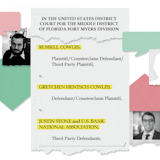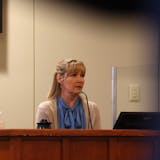Opinion editor's note: Editorials represent the opinions of the Star Tribune Editorial Board, which operates independently from the newsroom.
•••
Housing insecurity is a national challenge and increasingly serious problem in many metro areas. Not just high-profile cities like San Francisco, but here in Minnesota, too. The causes of the problem are multifactorial, and solutions need to be, too. So it's worth taking stock of Duluth's Safe Bay, a seasonal program providing people temporarily living in their vehicles with a place to more safely park overnight.
The program, which ended its initial April-October run last week as Duluth's overnight warming shelter opened, served about 200 people, including kids. As detailed in a Star Tribune story, Safe Bay provided a well-lit, higher-security parking lot at the Damiano Center, which hosts nearly 20 programs helping address homelessness. The lot was open during its warm-weather run from 8 p.m. to 8 a.m. and provided access to meals and showers, which helped stabilize some people's access to work.
Safe Bay is important because "it was a sector that has not been served in terms of a homeless-response system," John Cole, the executive director of Chum, told an editorial writer. Chum is a faith-based organization that helps homeless people as well as others in the community. "We had persons who had been on their own, trying to find a way to live in their vehicles, and that was unsafe for them." The success of Safe Bay, Cole said, underscores the need "to pay attention to the diversity of needs expressed within people experiencing homelessness."
That diversity of needs is manifest in Minneapolis, St. Paul and everywhere there are people without stable housing. And the challenges won't end soon, especially with the housing crisis exacerbated by a market seemingly stuck by higher interest rates, among other factors. So more specialized efforts are needed as part of the larger puzzle of addressing homelessness.
The Safe Bay program benefits city residents and those dedicated to serving them, too. "We support the Safe Bay program, because it does give people a safe place to be," Jon Otis, the deputy chief of the Duluth Fire Department's Life Safety Division, told an editorial writer. While emphasizing that sleeping in a vehicle on city streets is not illegal, Otis said that "it can be a challenge for those folks doing that to find a place to do it safely, where they're not asked to move on by neighbors or where they have more security." Oftentimes, he added, people living in cars have all of their belongings in their vehicle, so they're vulnerable in that way, too.
Otis also said that it helps first responders to be aware of a concentration of people experiencing homelessness in case of a medical emergency. And it can clearly be a better alternative than people sleeping in tents or temporary shelters, which can be fire hazards. "We have seen more working-class folks, more professionals or students that are unable to find housing that are living in cars and this is really kind of a safe alternative."



